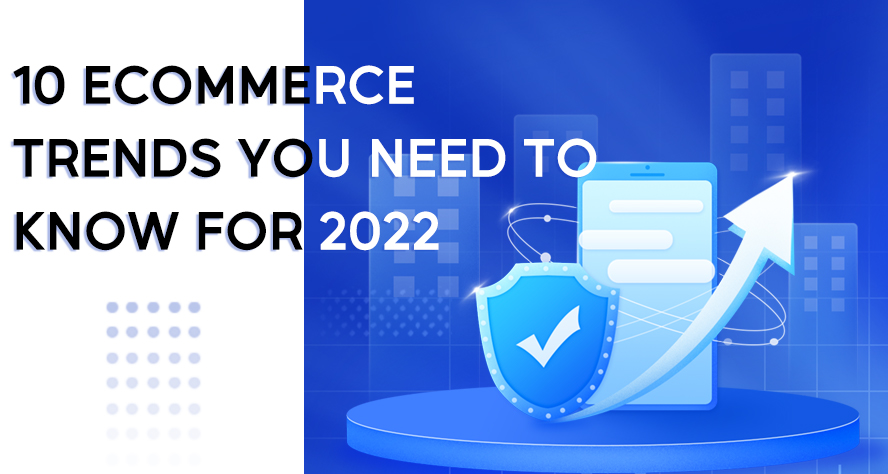If you’re involved in the business world, it’s vital that you pay attention to current e-commerce trends. The e-commerce industry has seen tremendous growth in the past few years. In 2021 alone, global e-commerce sales will be approximately $4.9 trillion. Global online retail sales are expected to reach $5.6 trillion in 2023, and that number is expected to grow to $7.4 trillion by 2025.
If you have a successful brick-and-mortar retail store or want to do business online, you need to be aware of the latest e-commerce trends, whether you want to be or not. By staying on top of these trends, companies can succeed in the ever-changing world of e-commerce.
5 Important 2023 eCommerce Trends to Watch
1. User-centric
As more and more online stores spring up across different industries and product categories, consumers have more and more choices. In addition to providing products that satisfy customers, reducing one-time transactions and increasing brand loyalty is the focus. So putting the user at the center, focusing on personalized service and superior customer experience will bring the best results for your business.
In addition to this, consumers are becoming more conscious of data privacy. You should foster trust among your customers by maintaining transparency, for example by including an easily accessible privacy policy and terms and conditions on your website.

2. Personalize the experience
Today, more and more buyers care about and want “personalized” encounters, according to a report by Forbes Insights: “Some 77% of executives say increased personalization has had a positive impact on sales. About 58 percent of companies use personalization strategies to help retain customers.”
Most e-retailers have achieved up to 20% sales growth through this strategy. This will be even more important by 2023, when the number of new online buyers will be at an all-time high, 10% more than in previous years. Personalization will play a key role in converting them into loyal customers.
How can you improve the personalized experience of your eCommerce customers?
Use customer data to create personalized recommendations: By analyzing customer data, you can create personalized product recommendations based on their past purchases, browsing history, and other information.
Offer personalized promotions and discounts: Create personalized promotions and discounts that are tailored to their specific interests and needs.
Use personalized emails and marketing campaigns: Create targeted email campaigns and marketing materials that are relevant to their interests.
Personalize the shopping experience on your website: Tailor the shopping experience on your website, such as by displaying recommended products based on their past purchases.
Offer personalized customer service: Provide personalized support and assistance to your customers. This can include things like personalized product recommendations and tailored support based on their specific needs.
Other suggestions include:
Add special features for certain products, such as interactive store pages and advanced customization options.
Provide 3D product views or augmented reality features on online store pages to enhance the customer experience.
Use unique product packaging. With unique and outstanding packaging, retailers can stand out from their competitors while building their brand and increasing customer retention and loyalty.
3. Smoother online shopping experience

The restrictions of COVID-19 have forced a dramatic change in consumer models. Consumers have had to start relying exclusively on online shopping for everything from groceries, apparel, electronics, healthcare, hygiene products, fitness equipment, and much more. And online shopping involves a host of less convenient issues such as the need to return or exchange products if they are not satisfied, and long waiting times for logistics.
In order to attract customers to place orders in your e-store, you can help improve the shopping experience by enhancing the following factors:
Streamline the checkout process: Make it easy for customers to complete their purchases by minimizing the number of steps required to check out and by providing clear, concise instructions.
Offer multiple payment options: Give customers the flexibility to pay using their preferred payment method, whether it’s credit card, debit card, or a digital wallet like PayPal or Apple Pay.
Provide clear product descriptions and high-quality images: Help customers make informed purchasing decisions by providing detailed, accurate product descriptions and high-quality product images.
Offer fast, reliable shipping: Customers expect their orders to arrive quickly, so make sure to offer fast, reliable shipping options.
Make it easy for customers to contact you: Provide multiple ways for customers to get in touch with you, such as through a contact form, email, or phone. This will help to address any questions or concerns they may have.
Use responsive design: Make sure your website is mobile-friendly and easy to navigate on all devices. This will make it easier for customers to shop on your website no matter what device they are using.
Offer a user-friendly search function: A good search function can help customers find what they are looking for more quickly and easily.
Display customer reviews and ratings: Displaying customer reviews and ratings can help other shoppers make informed decisions and can also help to build trust in your brand.
Use a clean, easy-to-navigate layout: A cluttered or confusing website layout can be frustrating for customers, so make sure your website has a clean, easy-to-navigate design.
Provide clear information about returns and exchanges: Make it easy for customers to understand your returns and exchanges policy by providing clear, concise information on your website. This will help to build trust and make it easier for customers to shop with confidence.
4. Social media marketing cannot be ignored

With billions of social media users worldwide, ignoring social media can kill your e-commerce business. Many consumers rely on social media for shopping inspiration.
According to The Future of Commerce, Global sales via social media platforms were estimated at 992 billion U.S. dollars in 2022, and forecasts suggest that social commerce sales will reach around 2.9 trillion U.S. dollars by 2026.
Generation Z in particular uses TikTok for search and product recommendations – more so than Google. So whether you decide to sell directly through social or not, social media marketing cannot be ignored.
New to social media marketing? Read these articles:
TikTok’s Marketing Guide For The Best Season Of The Year
Facebook Marketing for Beginners: 17 Tips to Help You Gain Followers Fast
15 Ways to Increase Followers on Instagram to Gain Loyal Followers
5. Eco-friendly and Sustainable on eCommerce

In recent years, as the earth’s climate has deteriorated, more and more consumers are increasingly demanding green and sustainability. In particular, the new generation of consumers are more inclined to those e-commerce companies/brands that are committed to environmental protection and sustainability.
Here are some things you can try:
Use eco-friendly materials: Choose materials that are environmentally friendly, such as recycled paper or biodegradable packaging materials.
Recycle and repurpose: Implement a recycling program at your business and look for ways to repurpose materials instead of throwing them away.
Use eco-friendly products: Choose eco-friendly products for your business, such as cleaning supplies made from natural ingredients and office supplies made from recycled materials.
Support eco-friendly vendors: Choose to work with vendors and suppliers who have a commitment to sustainability.
Communicate your sustainability efforts: Share your sustainability efforts with your customers and stakeholders to show your commitment to the environment.
These are the top five trends for overseas e-commerce in 2023. E-commerce competition is also gradually increasing, and as e-commerce retailers need to follow the trends and combine marketing strategies with emerging e-commerce trends to increase store sales and stay competitive.





